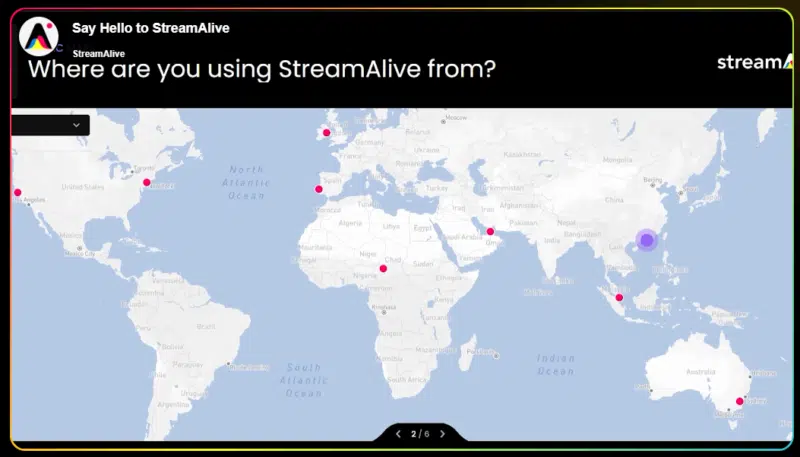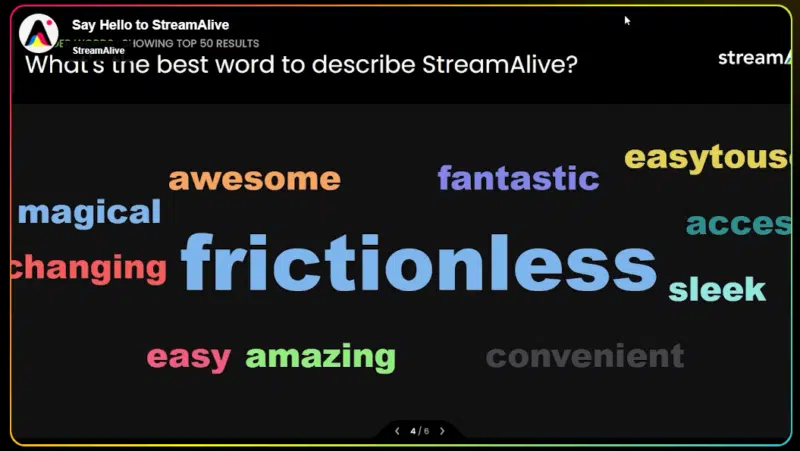Transforming meetings with StreamAlive’s visual chat experience
Meeting chats have big limitations, especially for big audiences. Imagine converting chat to a creative, visual experience.
Spending as much time as we do in video conferences, video meet-ups and webinars, we’ve become accustomed to those chat windows where people and their messages and questions come and go in an instant as they automatically scroll to the latest content.
It turns out that there’s a different way. Trust some guys obsessed with visual thinking to be early adopters.
Introducing The Visual Jam
Pardeep “Paddy” Dhanda and Grant Wright are the co-founders of The Visual Jam, a meet-up community for visual thinkers that is evolving into a business start-up.
“Paddy and I both have a background in business analysis and agile software development,” said Wright. “We connected at the community events Paddy was running a few years ago and we discovered we both have this interest in using hand drawn visuals to help with our work and to make presentations more unique; we were interested in this world of visual thinking, as it’s called. We wanted to learn more about it, so we set up a meet-up community in Birmingham in the U.K.”
That was the idea, at least, but COVID-19 temporarily put paid to any in-person meet-up plans. “In August 2020 we decided to launch The Visual Jam meet-up but do it virtually,” said Grant. “It was a free meet-up event for us to kind of selfishly learn about visual thinking.”
What exactly is “visual thinking”? “There are lot’s of different kinds of thinking,” explained Dhanda. “Design thinking, systems thinking, critical thinking — and visual thinking is using visuals to help articulate messages and to communicate. Like agile, it’s a bit of an all-encompassing term. Some people use it to enhance collaboration, others use it to report and simplify information, others use it for graphic design.”
The Visual Jam plus StreamAlive
So far, The Visual Jam has remained virtual, although there are some plans for in-person events later this year. It started out using Zoom with the Miro visual workspace app — a fairly conventional set-up. And, of course, it started in lockdown, and the co-founders wanted to lighten the mood.
“When we started The Visual Jam we wanted to incorporate lots of fun,” said Dhanda. “We wanted it to be an escape for people. We always start off with some music and an activity for the audience; we wanted to overcome that awkward moment at the start where people are logging on and getting warmed up. I was wondering what more we could do. I was using AppSumo, the app marketplace, and I spotted StreamAlive.”

Incorporating StreamAlive into their Zoom set-up meant that many of the things happening in chat and elsewhere suddenly became appropriately visual. For example, participant locations appear on a world map as soon as they’re typed in the chat. “At the start of every event we get people to tell us where they’ve joined us from,” said Wright, “and in real time we can see people popping up and we can talk about where people are joining from. It’s an element of breaking the ice.”
“We’re still waiting for someone from the North Pole to appear,” commented Dhanda.
Likewise with polls. “People just type in the chat and you can just see the poll emerge without having to run a separate interaction or break from the event,” said Wright. There’s a spinning wheel that they’ve used to pick winners of prizes. “StreamAlive allows you to set up a ‘run of show,’ a series of scenes, so you can open with the map, move on to a poll, pull up a slide and so on” Wright continued.

Also, invaluably for the presenters, it can gather all the questions appearing (and quickly disappearing) in the chat and aggregate them. It will do the same for the many links participants share.
And then there are the opportunities for StreamAlive live and in-person. “We’ve really only used StreamAlive in the context of a Zoom call, running a virtual meet-up or a virtual training course,” Wright said, “but we’re aware that you can run StreamAlive almost in a standalone mode. So if you’re doing a face-to-face interaction — we do a lot of face-to-face conference speaking — you can actually set up the same sorts of things, the spinning wheels and the word clouds. You can get people to scan a QR code in a live situation and have the audience share their feedback.”
The origins of StreamAlive
StreamAlive was co-founded by Lux Narayan, well known in the martech space as the ten-year CEO of social media analytics and intelligence platform Unmetric. Unmetric went through a series of acquisitions beginning in 2019, transitioning from an independent company to one owned by a corporate parent (it’s now part of Brandwatch). Then the world went into lockdown. “I took a break,” said Narayan.
He quickly realized he needed to do something, so he wrote a book. “I signed up for about six different online courses on how to write a book, how to edit a book, how to market a book and how to get Amazon to bless your book. These were mostly on Zoom, a couple were on Google Meet; 56 live sessions that happened over a compressed six week period. When you have 56 live online sessions across different platforms you start seeing common patterns.”
For example, at the beginning of a session, the question “Where are you joining from?” would prompt 300 people to introduce themselves in the chat. The presenter might pick out two people, welcome them, and ignore the other 298. Asked to identify their biggest pain-points in writing a book, maybe 100 audience members would respond. One-to-many conversations online were certainly broken. That became the impetus for starting to build StreamAlive.
Narayan started out with the old Unmetric crew, looking at what was technically possible. Chat was a common component across video meeting platforms. “Can we give the audience a collective visual voice through chat?”
One notable thing about the solution is the comparatively gentle (as of now) pricing. This is by no means an enterprise-only proffer. “Someone running a Twitch livestream, someone trying to build a coaching business, everybody can use it,” said Narayan. “If you have a large enterprise with a large number of participants, you would pay for a license that allows that, but we wanted to be affordable for anyone running a webinar or a small session as well.”

Some StreamAlive customers have already tried the solution in in-person settings. “That was the other realization we had,” said Narayan. “In a Zoom session, if you are presenting and I want to have a sidebar conversation with someone in chat, you won’t be offended because we are not spoiling your flow. If we’re talking in a physical room, people will turn around and shush us.”
Although StreamAlive is intended for audiences, Narayan gave me a one-on-one (virtual) demo showing me that I could participate in a chat on Zoom using the laptop through which I had joined the meeting — or, by scanning a QR code, using my phone. The chats were integrated and my responses created visual results on the main screen. Hybrid, as he told me, was here. (It’s important to emphasize that StreamAlive is not an event hosting platform; it plugs into well-known hosting platforms like Zoom, Google Meet, Microsoft Teams, etc.)
He also demonstrated the incorporation of a generative AI component, empowering StreamAlive to create natural language prompts and respond to prompts in chat. He sees more opportunities there: “Why can’t we use genAI to create the entire daisy chain?”
All screenshots from StreamAlive.
Related stories